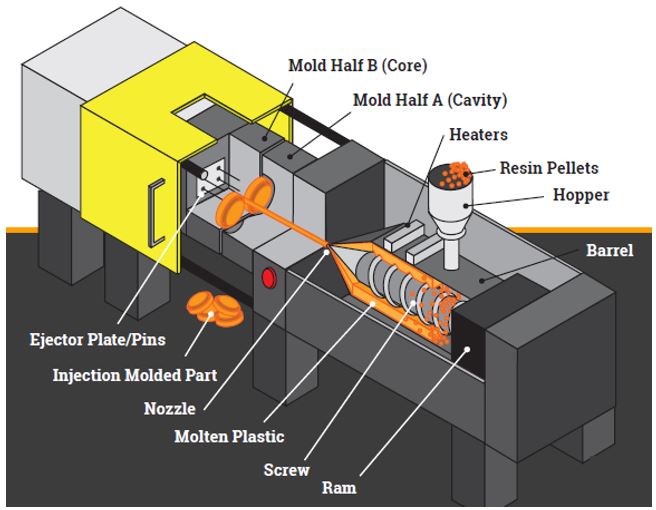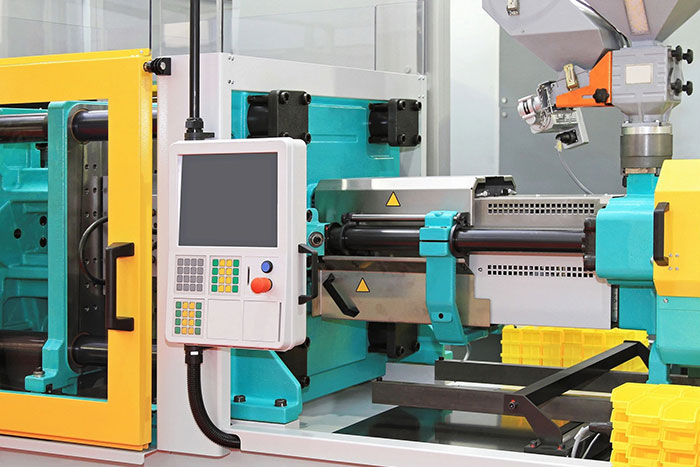Plastic Injection Molding: A Comprehensive Overview to Modern Production Techniques
Plastic Injection Molding: A Comprehensive Overview to Modern Production Techniques
Blog Article
Understanding the Fundamentals of Plastic Shot Molding Procedures
Plastic injection molding offers as a keystone of modern manufacturing, offering a methodical technique to creating complex components with accuracy. Checking out these vital aspects could reveal just how even small modifications can lead to considerable enhancements in production outcomes, elevating questions regarding the potential for technology in this well established procedure.
What Is Plastic Shot Molding?
Plastic injection molding is a widely utilized manufacturing procedure that transforms thermosetting and thermoplastic products right into accurate and intricate shapes. This method is preferred for its ability to create high quantities of similar components with outstanding precision, making it a vital method in different sectors, including automobile, durable goods, and medical gadgets.
The procedure involves thawing the picked plastic material and injecting it into a mold and mildew under high stress. The mold, created to the requirements of the desired part, enables the liquified plastic to materialize as it cools and solidifies. When the product has actually hardened, the mold is opened, and the completed part is expelled.
Plastic shot molding offers numerous advantages, consisting of lowered waste, uniformity in production, and the capability to integrate elaborate layouts that might be challenging with various other making techniques. In addition, it supports a broad series of materials, each offering distinct homes that can be customized for certain applications. As markets proceed to innovate, plastic injection molding remains at the forefront, enabling the development of advanced items that fulfill advancing customer demands.
The Injection Molding Process
The shot molding process is an advanced technique that involves numerous vital phases to create premium plastic elements. Plastic pellets are fed into a heated barrel where they are thawed into a thick fluid. This molten plastic is after that injected under high stress right into a precision-engineered mold, which forms the product into the wanted type.
As soon as the mold is loaded, the plastic is allowed to solidify and cool, taking the form of the mold cavity. Air conditioning time is important, as it affects the cycle time and the last buildings of the molded part. After adequate cooling, the mold and mildew opens, and the ended up element is expelled utilizing ejector pins.

Materials Utilized in Shot Molding
Numerous products can be used in the injection molding process, each offering distinct residential or commercial properties that accommodate particular applications. The most frequently utilized materials include thermoplastics, thermosetting plastics, and elastomers.

Thermosetting plastics, like epoxy and phenolic materials, undergo a chemical modification during the treating process, resulting in an inflexible, inflexible framework. These products are perfect for applications calling for high heat resistance and structural stability, often utilized in automotive components and electrical insulators.
Elastomers, consisting of silicone and rubber-based products, supply flexibility and resilience. Their distinct residential properties make them appropriate for applications that demand elasticity, such as gaskets and seals.
Furthermore, specialized products like bio-based plastics and composites are obtaining grip for their environmental advantages and enhanced efficiency characteristics, expanding the range of injection molding applications in various industries. Recognizing the residential properties of these materials is critical for selecting the suitable kind for details jobs.
Benefits of Shot Molding
Shot molding stands apart as a highly reliable production process that provides numerous advantages for creating intricate parts with precision. One of the most substantial benefits is the capacity to develop complex styles that would certainly be impossible or challenging to achieve with other methods (Plastic Injection Molding). The process permits tight resistances and comprehensive functions, guaranteeing top notch elements
In addition, injection molding is understood for its rapid manufacturing capacities, making it a perfect option for high-volume production. When the mold is developed, components can be produced promptly, lowering lead times and raising general productivity. This effectiveness not only lowers manufacturing costs yet likewise provides an affordable edge in the marketplace.
The adaptability of materials made use of in injection molding additionally enhances its allure. A large range of thermoplastics and thermosetting polymers can be utilized, permitting producers to pick materials that finest satisfy their certain requirements, consisting of warmth, strength, and versatility resistance.
In addition, the process lessens you could check here waste, as excess material can commonly be reused and reused. This sustainability element adds to a reduced environmental influence, making shot molding a responsible manufacturing option. Overall, the advantages of injection molding make it a favored approach for many industries.
Elements Influencing Item Quality
While numerous elements can influence product high quality in shot molding, recognizing these elements is essential for accomplishing ideal outcomes. Trick facets include material selection, processing parameters, and mold style.
Material choice plays a crucial duty, as various polymers show one-of-a-kind properties that affect flowability, strength, and thermal stability. Inadequate material selection can result in flaws such as warping or incomplete dental filling.
Processing parameters, including temperature level, cycle, and pressure time, should be carefully controlled. Variants in these setups can lead to disparities in part dimensions and surface area finish. Excessively high temperatures might trigger degradation of the polymer, while inadequate stress can result in short shots.
Mold layout is similarly essential, as it determines the circulation of the molten plastic and the cooling process. Badly designed mold and mildews may bring about irregular cooling rates, causing residual stresses and dimensional errors.

Final Thought
In verdict, plastic shot molding acts as an important production procedure that allows the effective production of premium elements. Mastery of the shot molding procedure, consisting of the understanding of materials and the influence of various variables on item high quality, is necessary for accomplishing optimal results. The benefits of this technique, such as cost-effectiveness and style flexibility, further emphasize its relevance across multiple sectors, solidifying its status as a recommended selection for high-volume production.
Plastic injection molding offers as a foundation of modern production, supplying a methodical strategy to creating complex elements with precision.Plastic shot molding provides several benefits, including lowered waste, consistency in manufacturing, and the ability to include elaborate styles that might be challenging with other making techniques (Plastic Injection Molding). As sectors proceed to innovate, plastic shot molding remains at the leading edge, enabling the growth of advanced items that meet progressing consumer demands
The shot useful link molding process is an advanced technique that includes numerous essential phases to produce top notch plastic components.In verdict, plastic injection molding serves as an essential manufacturing procedure that makes it possible for the efficient manufacturing of high-quality elements.
Report this page